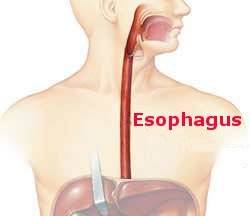I continually boggle to consider how much surgical treatment of these malignancies has evolved and results have improved since I completed my thoracic surgery residency and began my practice of genera thoracic surgery in 1981. The two changes with the most impact are the way these operations are performed and Read More
Tag: esophageal cancer
When I began my thoracic surgery practice in 1981 the prognosis for patients with esophageal cancer was worse than grim. It was a death sentence. The 10-year survival rate was close to zero. Happily, things have changed and outcomes are better. The SEER database now reports 10-year survival for new Read More
Considerations in choosing a surgeon. Operations for esophageal cancer are performed by general thoracic surgeons like me (so you know my prejudice), surgical oncologists and general surgeons. Who should operate on you? Appropriate considerations will resemble my previous thoughts for lung cancer surgery. The experience the surgeon had in Read More
Making life better. Not all cancers are curable. When this is the case subjecting the patient to a major operation such as an esophagectomy with its risks of significant morbidity and even mortality is inappropriate. Happily, there are interventions that can improve the quality of life and extend it. Both Read More
What is the goal of an esophagectomy? The answer may seem obvious, but it was not always so. As recently as when I began my practice in the early 1980s the hoped-for outcome was that the patient’s dysphagia would be relieved. Cure of the cancer was a welcome result but Read More
Progress is made. Despite Torek’s “successful” esophagectomy discussed in the previous blog, few such operations were subsequently performed. In 1933 the British surgeon Grey-Turner introduced an alternative technique for esophagectomy. He made incisions in the neck and abdomen and, sliding his hands down and up respectively, freed and removed the Read More
Into the chest. The chest is the home of most of the esophagus, so it is the location of most cancers. Operating in the chest was impossible until sufficient anesthesia capabilities were established and the lungs could be ventilated. No awake and sentient patient could tolerate the pain of a Read More
A challenge for surgeons. The esophagus starts in the neck, traverses the chest, and ends in the abdomen where it enters the stomach. Surgeons may need to enter up to all three anatomic areas to perform an adequate cancer operation. In addition, the esophagus is in close proximity to the Read More
Esophageal cancer. There are different types and locations The esophagus is the “tube” that food slides through to get from the mouth to the stomach. It’s a biologic conveyer belt. No digestion, just transportation. Cancer of the esophagus has been known for millennia to be very lethal. It arises inside Read More
As discussed in my previous blog, chest operations became feasible in the 20th century once the abilities to induce a state of general anesthesia and to use positive pressure endotracheal ventilation of the lungs were in place. In the USA these procedures were performed by General Surgeons. In fact, that Read More

